Thursday, October 7, 2021
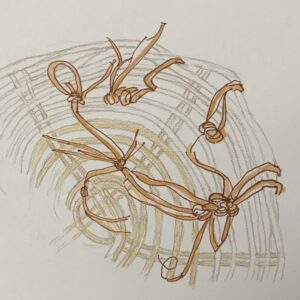 When we have experienced emotional or physical or relationship damage in the past, it can continue to feel frustrating at best and irreparably harmful at worst. I so often look at the broken places as problems, limitations, and inadequacies. Or I try to ignore them. But the kintsugi approach actually highlights the beauty in repairs.
When we have experienced emotional or physical or relationship damage in the past, it can continue to feel frustrating at best and irreparably harmful at worst. I so often look at the broken places as problems, limitations, and inadequacies. Or I try to ignore them. But the kintsugi approach actually highlights the beauty in repairs.
The Japanese word kintsugi describes the ancient art of repairing broken pottery by mending the areas of breakage with lacquer dusted or mixed with powdered gold, silver or platinum. Kintsugi takes a broken piece of pottery, and uses precious and beautiful lacquer to highlight all those places where the breakage happened. The end result is something that many would say is even more beautiful than the pristine original.
Kintsuge treats breakage and repair as part of the history of an object, rather than something to disguise. Reflecting on this is helpful for me. The kinds of damage we can experience can include things like emotional abuse, physical illness or injuries, treatments for cancer, relationship break-ups, or forced relocation.
I have had a laundry basket for decades. The lid has slowly been breaking apart at the edges. I decided to repair it using raffia pieces that came in some packaging. I tied the raffia pieces to the edge places where it was breaking to hold them together. This is a drawing of the result. Someone commented on this drawing, and said that it looks like the raffia pieces are dancing. I can look at this basket lid, and reflect on the same for my life. I can react to the injuries, and make beauty, and creatively respond. Fully acknowledging the injuries, the hurts, the damage, but also reveling in the dance of my responses.
Many of the Zen stories that are almost always incomprehensible in rational terms are simply the ringing of an alarm clock, and the reaction of the sleeper. Usually the misguided sleeper makes a response which in effect turns off the alarm so he can go back to sleep. Sometimes he jumps out of bed with a shout of astonishment that it is so late. Sometimes he just sleeps and does not hear the alarm at all.
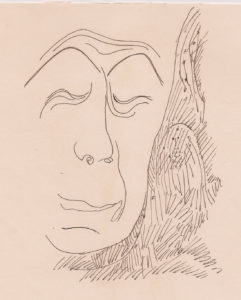
art by lynn
But we in the West, living in the tradition of ego-centered practicality and geared entirely for the use and manipulation of everything, always pass from one thing to another, from cause to effect, from the first to the next to the last and then back to the first. Everything always points to something else, and hence we never stop anywhere because we cannot: as soon as we pause, the escalator reaches the end of the ride and we have to get off and find another one.
-Thomas Merton, Zen and the Birds of Appetite.
Saturday, January 27, 2018
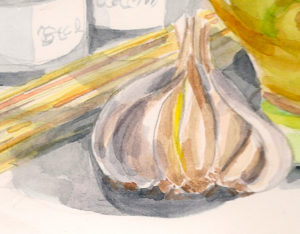 “People who place their small time into the heart of eternity, which they already carry within, will suddenly realize that even small things, have inexpressible depths, are messengers of eternity, are always more than they appear to be, are like drops of water in which is reflected the entire sky, like signs pointing beyond themselves, like messengers running ahead of the message they are carrying and announcing the coming of eternity, like shadows of true reality that are cast over us because the real is already very near.”—Karl Rahner (trans. Annemarie Kidder)
“People who place their small time into the heart of eternity, which they already carry within, will suddenly realize that even small things, have inexpressible depths, are messengers of eternity, are always more than they appear to be, are like drops of water in which is reflected the entire sky, like signs pointing beyond themselves, like messengers running ahead of the message they are carrying and announcing the coming of eternity, like shadows of true reality that are cast over us because the real is already very near.”—Karl Rahner (trans. Annemarie Kidder)
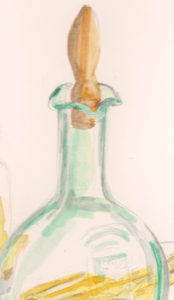
art by lynn
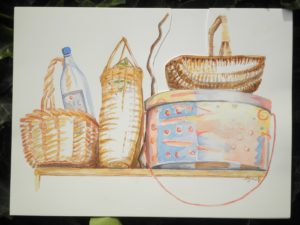
The events of our lives happen in a sequence in time, but in their significance to ourselves they find their own order: the continuous thread of revelation. -Eudora Welty
I have a collection of objects sitting on top of my bookcase – with various things inside. Reminders with meaning. One basket bought while living in Belfast, another from Kalamazoo, one a gift from a colleague once full of fresh fruit. A hatbox that has held wide-brimmed hats that I once wore to keep the drizzle off my head or to shield the sun. Peeking out of one basket, a water bottle once full, mercifully purchased for me by my hosts on a car trip from from the airport at Cluj-Napoca to Targu Mures Romania. A box of note cards of leaf photos bought in the village of Einsiedeln, Switzerland at a meeting held at a Benedictine monastery in the Alps. I so often want to get rid of various objects, downsize my belongings, but these objects continue to live as part of a “thread of revelation”. When I did this painting, all of these events came back to me more vividly. The people, the interactions, the experiences and feelings. Perhaps this painting can now take the place of the objects, calling all to mind.
A song is unfixed in time and place (as distinct from the bodies it takes over). A song narrates a past experience.
When it is being sung, it fills the present. Stories do the same, but songs have another dimension which is uniquely theirs. A song, whilst filling the present, hopes to reach a listening ear, in some future somewhere. It leans forward, further and further. Songs lean forward. Without the persistence of this hope, songs, I believe, would not exist.
The tempo, the beat, the repetitions, construct a shelter from the flow of linear time. A shelter in which future, present and past can console, provoke, ironize and inspire one another. Most songs being listened to across the world at this moment are recordings, not live performances. And this means that the physical experience of sharing and coming together is less intense, but it is still there, it is present in the heart of the exchange and communication taking place.”
This is a quote from a BBC Radio 3 Documentary program essay by John Berger (I have an old book on my shelves by him: On Seeing.His writing has been described as “a listening voice”). Other art forms do what he is describing here, but music has special qualities. It can surrounds us in a way that can be like an embrace, or touch us directly like the most intimate words of a friend.
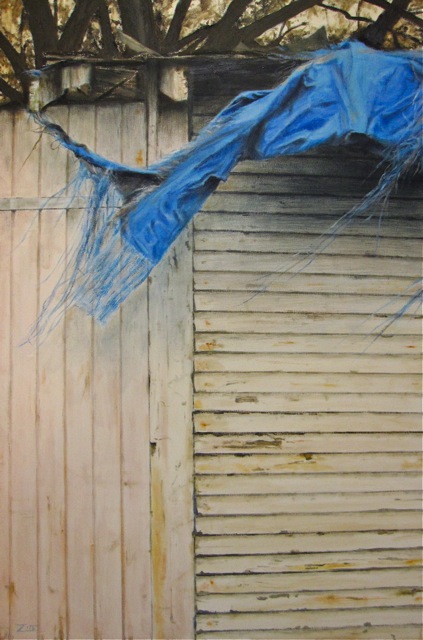
Assumption by Ron Zito
When taking a week-long life drawing class a couple of weeks ago with Barry Moser, I had the opportunity to see the work of one of my classmates, Ron Zito, during the open slide night. Ron talked us through a series of images of his large oil paintings, some with religious titles. But the images themselves were not literal in any way. His presentation reminded me of Beckett’s book of contemporary art, The Gaze of Love, that I have sometimes used for morning contemplation. Ron’s images of empty rooms, unpeopled spaces, draped cloth, and concrete barriers along a riverbank were not what we usually think of as religious images. But they were very touching, and that touch took me by surprise. A young woman sitting next to me began to cry on seeing one of them and hearing his description. You can view them on www.ronzito.com under the Oil Paintings drop down menu, and they merit slow appreciation. Some of my favorites are The Assumption, Within and Without, Still Point and Leap. He brings out spiritual qualities in ordinary things through his way of seeing and his realistic skills with luminous oil paint. His paintings somehow describe the impressions left on spaces by those who have inhabited them, and then we can inhabit them too in some way. The notion of eternal time.
Every day we see things that have the power to draw our attention to the presence of the holy, the divine, God, in our ordinary days. We can miss the transcendent speaking through the ordinary. This direct communication can often happen in the midst of brokenness, or in places that seem empty at first glance. Ron Zito’s paintings remind me in some ways of apophatic theology– no words or images are adequate to describe the spiritual aspects of our lives. We wave our hands and try – and some of us come closer to success than others.
In my Art Science and Spirituality course I share an interview with the South American composer Oswaldo Golijov. He describes the effects of certain kinds of music on spiritual experience in his life, and describes his response to Monteverdi’s Vespers. One of the concepts I address in that class is how both the arts and the sciences inform our understanding of time. How we envision time has a practical effect on us. Do we leave space for a more nuanced and eternal view of time? This interview is only seven minutes long and is well worth listening to, and it contains excerpts of the music. http://www.studio360.org/story/106875-osvaldo-golijov/
He also describes inhabiting music like a cathedral, and how the way music and words are combined can enable the words to penetrate more deeply.
Tuesday, December 31, 2013
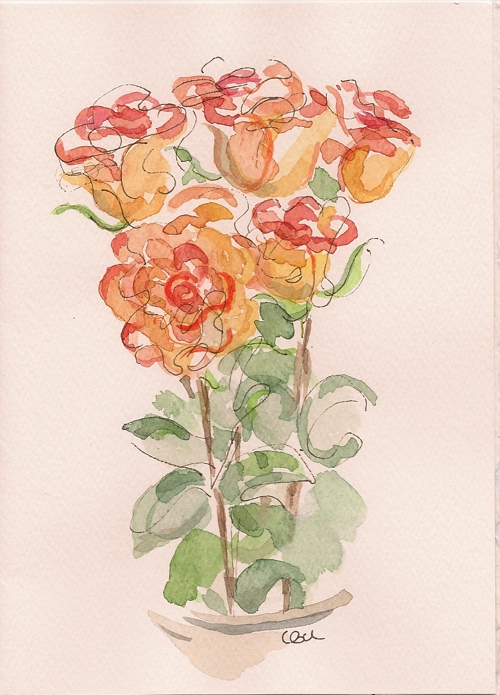
art by lynn
From Billy Collins, Picnic, Lightning. University of Pittsburg Press, 1998. (This book is full of gems like this.)
 When we have experienced emotional or physical or relationship damage in the past, it can continue to feel frustrating at best and irreparably harmful at worst. I so often look at the broken places as problems, limitations, and inadequacies. Or I try to ignore them. But the kintsugi approach actually highlights the beauty in repairs.
When we have experienced emotional or physical or relationship damage in the past, it can continue to feel frustrating at best and irreparably harmful at worst. I so often look at the broken places as problems, limitations, and inadequacies. Or I try to ignore them. But the kintsugi approach actually highlights the beauty in repairs.
 “People who place their small time into the heart of eternity, which they already carry within, will suddenly realize that even small things, have inexpressible depths, are messengers of eternity, are always more than they appear to be, are like drops of water in which is reflected the entire sky, like signs pointing beyond themselves, like messengers running ahead of the message they are carrying and announcing the coming of eternity, like shadows of true reality that are cast over us because the real is already very near.”—Karl Rahner (trans. Annemarie Kidder)
“People who place their small time into the heart of eternity, which they already carry within, will suddenly realize that even small things, have inexpressible depths, are messengers of eternity, are always more than they appear to be, are like drops of water in which is reflected the entire sky, like signs pointing beyond themselves, like messengers running ahead of the message they are carrying and announcing the coming of eternity, like shadows of true reality that are cast over us because the real is already very near.”—Karl Rahner (trans. Annemarie Kidder)



